We are now in carnivals , days in which nothing is what it seems and illusionism in dress and acting becomes an art.
In our country we can say that we have many ways of celebrating Carnival, but there is life beyond the Canarian troupes and the chirigotas from Cadiz. we travel by the most rural Spain to meet centennial, picturesque and even forbidden carnivals.
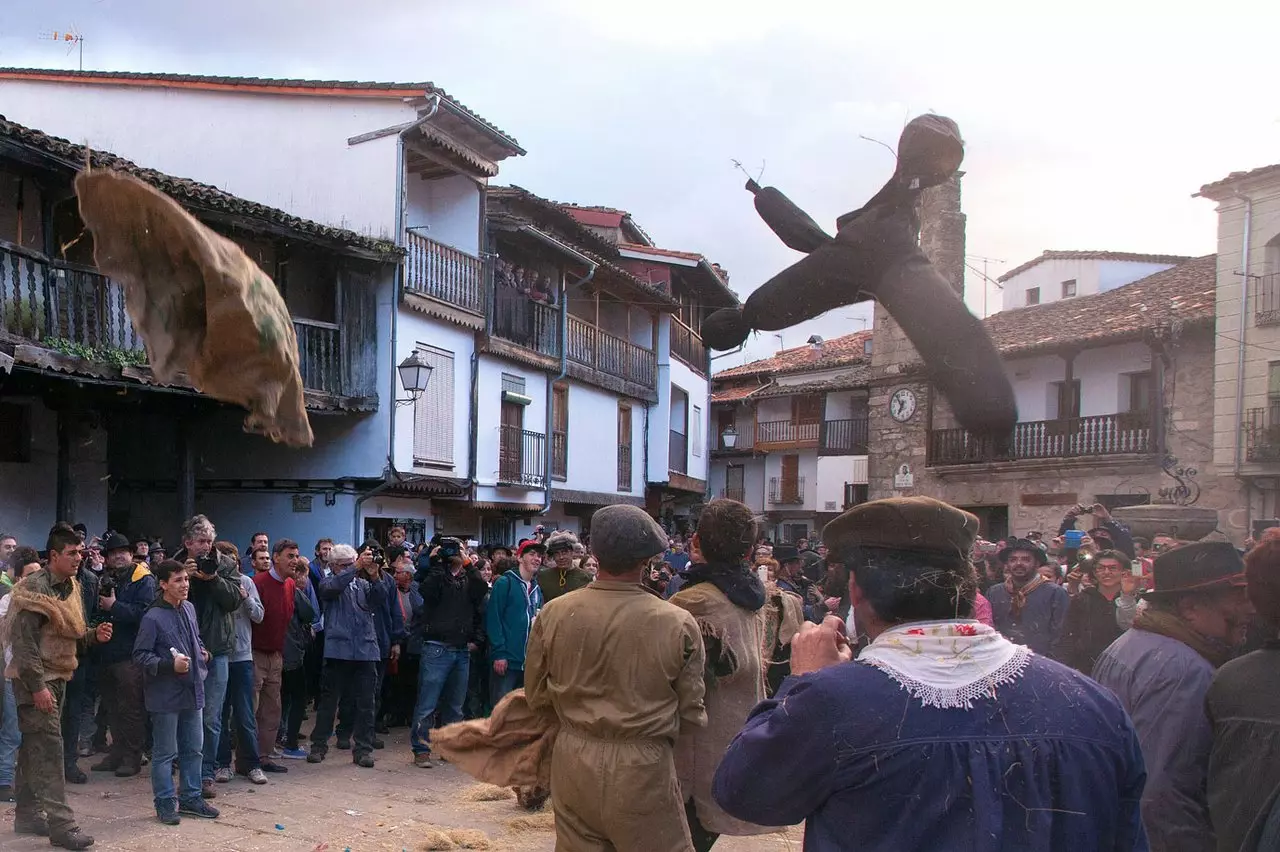
Carnival of El Peropalo, Villanueva de la Vera.
THE PROCESSION OF THE PEROPALO
It is one of the carnivals more picturesque of our country and takes place in Villanueva de laVera, in the province of Caceres. The Peropalo is a straw doll, who normally dresses in black and wears a hat and a white scarf.
It is believed that it symbolizes a thug who, fleeing from the Holy Inquisition He fell through these lands where he was arrested and executed, although his origin is uncertain. Carnival Sundays the doll is "walked" through the streets of the town and is hung in the Plaza where it will be the object of ridicule and popular ridicule.
When Tuesday arrives, the Peropalo will be judged, condemned, beheaded and even his virile member (represented by a sausage) will be exhibited. Finally the Peropalo will be blanketed and burned, marking the end of the party. The festivities kick off next February 20.
THE JUDGMENT OF THE SEAM AND THE SANTOÑA SARDINE
Since more than a century This peculiar carnival is celebrated in the Cantabrian city of Santoña; a carnival that has been declared as a Festival of National Interest and that it is one of the most important in the north of Spain.
On Carnival Saturday, considered the big day, in the morning the “inmate” is seized, who will parade surrounded by fish and he will be tried that same afternoon at the bottom of the sea. The murgas, costume contests and the incredible parades fill the Cantabrian town with colour, dotting the spaces with comedy and musical shows.
So important is the Murga de Santoña that it participates with the rest of chirigotas in the Cádiz Carnival. This year the spaces are more restricted and it is important to book in advance to avoid being left out.
The big day of the Carnival will be next February 26. It is highly advisable to seek accommodation early as even the nearby rural houses They are usually in high demand.
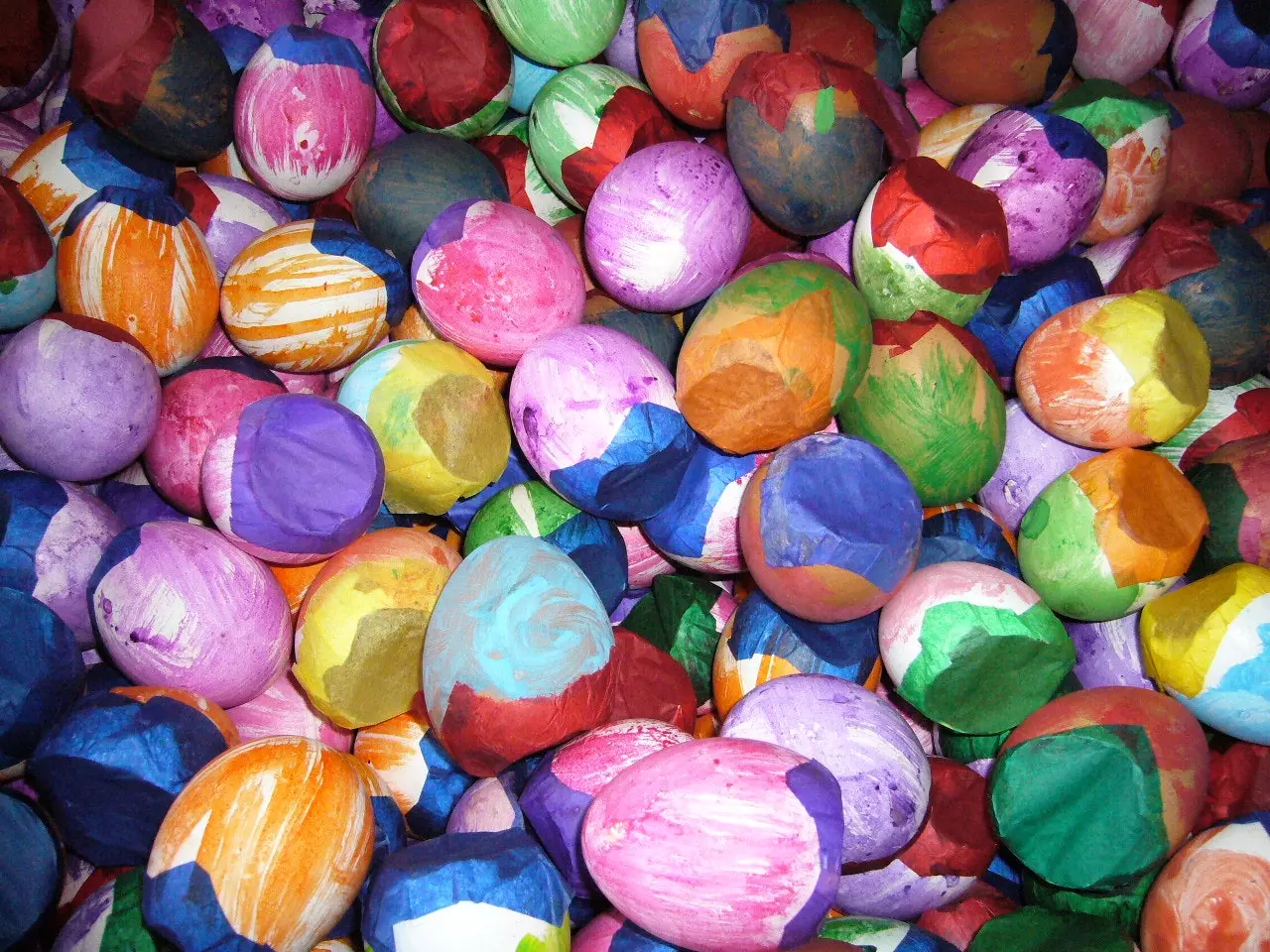
Carnival Shells, Eagles.
EAGLES AND THE BATTLE OF THE CASCARONES
We have to move to the Murcian town of Águilas to find one of the most picturesque carnivals of our country. Here the famous battle of Cascarones between Doña Cuaresma and Don Carnal.
The cascarones are nothing more than whole egg shells that have been filled with colored confetti during the months prior to Carnival and are used as throwable ammunition between the two sides, the one of Doña Cuaresma that represents sobriety and modesty and Don Carnal that represents the reincarnation of the god Janus, god of two faces and custodian of good endings. Fireworks, floats, drag queens and jokes.
The Carnival will begin on February 18 and will last until nothing more and nothing less than March 12, so there is plenty of time to plan a getaway.
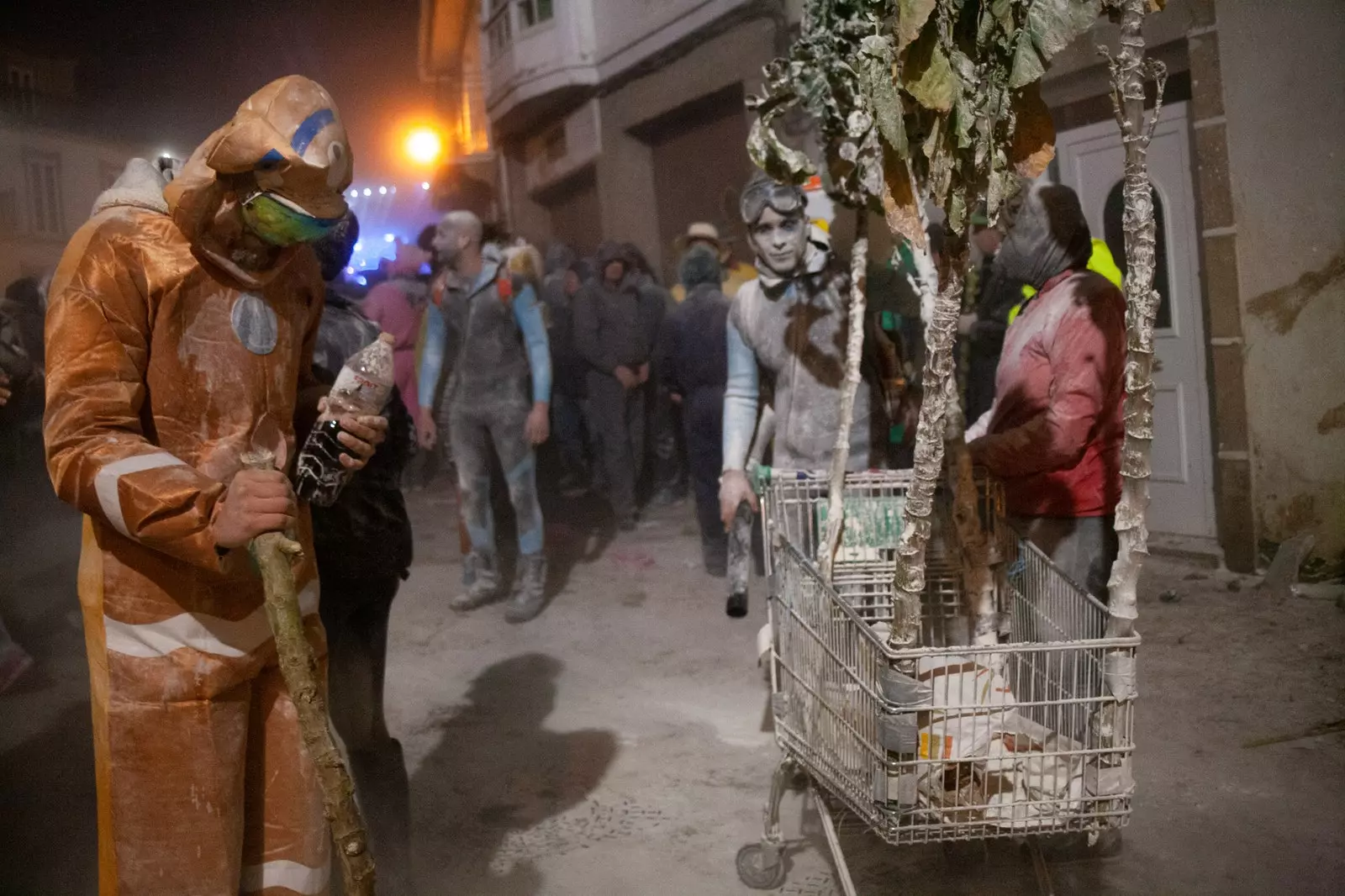
The Ants of the Laza Carnival.
THE ANTS OF THE GALICIAN CARNIVAL OF LAZA
It is considered as one of the oldest carnivals in the world, and is celebrated in the town of Laza in Ourense. Pointing its origin probably to the Celts, the Carnival of Laza puts in the center the image of the "Peliqueiros", characters with masks that carry cowbells and a whip and whose mission is to drive away evil spirits.
Almost anything goes here, from a fariñada (battle of flour) until the launch of the "bulleiro" (remains of cloth and leaves mixed with mud), everything is to celebrate a Carnival in which there is no lack of good food and good drinking.
On Carnival Monday, the "lowering of the ants and the Morena" takes place, symbolized in a wooden cow head that goes down to the town square where the battle of the earth and the ants takes place. Total chaos. The big day is February 27.
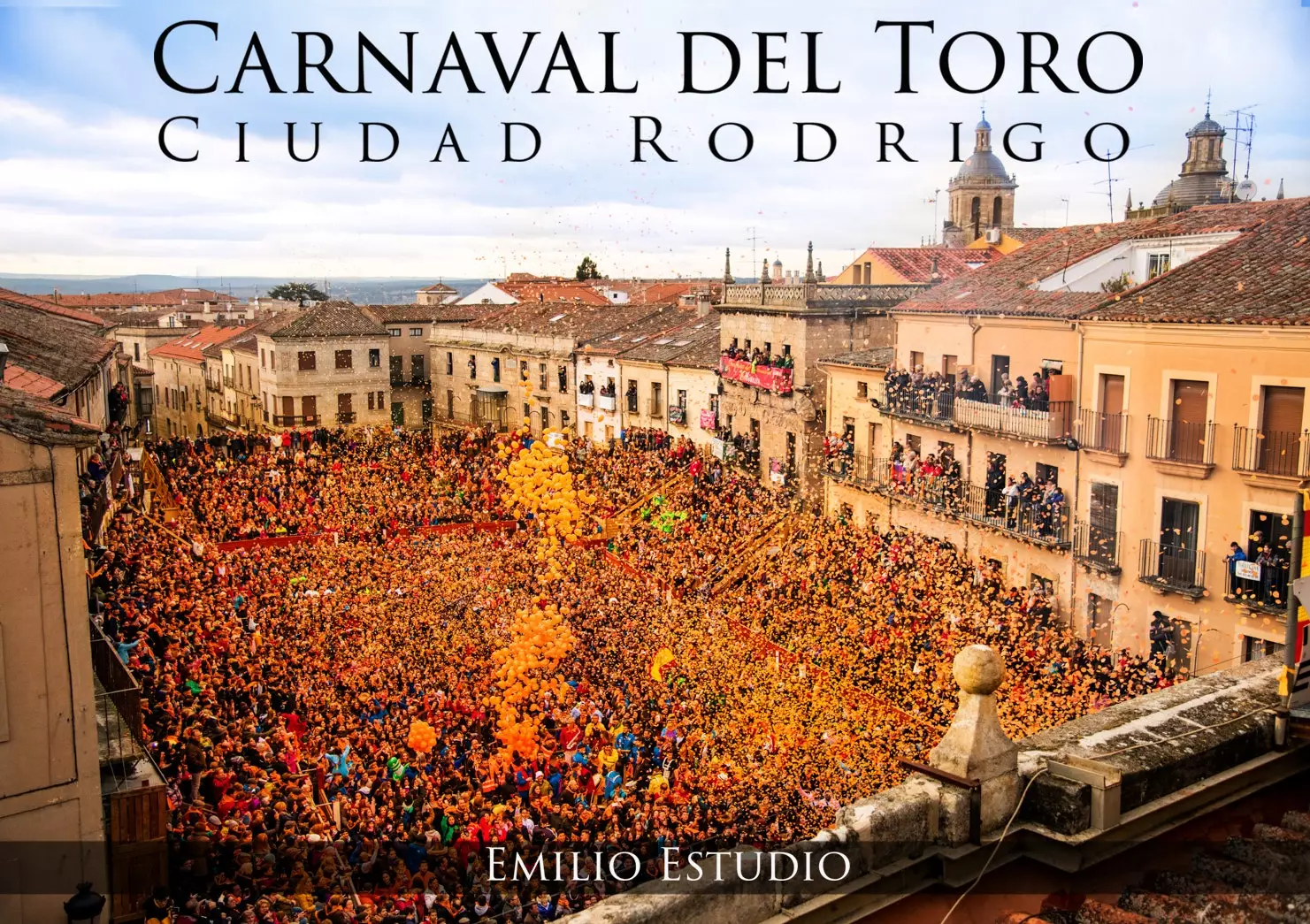
Carnival of the Bull, Ciudad Rodrigo.
CARNIVAL OF THE BULL OF CIUDAD RODRIGO
Is about one of the oldest festivals of our country. As its name indicates, it is a Carnival very focused on activities of bullfighting origin, either in the form of capeas or bullfights and running of the bulls.
But what really catches the attention of the Carnival of Rodrigo City it is the Running of the Horse, a running of the bulls (this year of the Villalpando ranch) that is carried out in equestrian mode on Carnival Sunday and that is quite a show. Parades of floats, pageants of costumes and a lot of brandy , Specially in the so-called “Toro del Aguardiente” which is celebrated on Shrove Tuesday and in which this liquor is served in considerable quantities.
This year, in case someone is left wanting more, there will be a second Toro del aguardiente on Ash Wednesday. Although this year the festivities begin on February 25, the proclamation will be on Thursday 17 and since then there will be some activities.
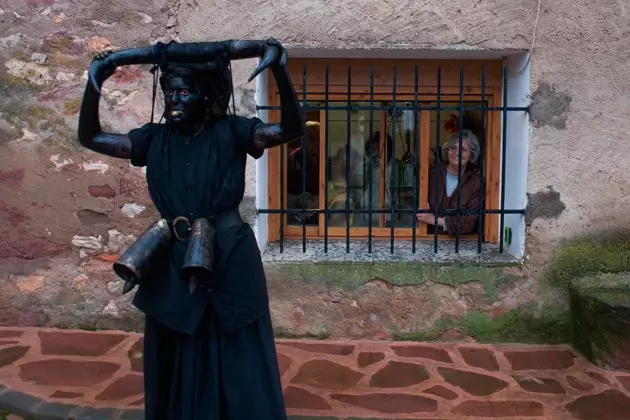
Los Diablos Carnival, Luzon
THE DEVILS OF LUZON
We moved to the province of Guadalajara, more specifically to the small town of Luzon, where one of the most disturbing carnivals in our country is celebrated.
This tradition, which probably goes back to more than five hundred years ago, It is characterized by the presence of devils dressed in black, smeared with oil and soot. These devils, with large horns, are tied around their waists big cowbells that cause a good noise and will try to scare everyone who passes by.
to everyone except to “las mascaritas”, masked women who have earned the respect of the devils. The sound of the dulzainas will cheer up the festive character of this curious festivity which usually takes place on Carnival Saturday.
Despite its antiquity, this festival fell into oblivion in the mid-20th century and was rescued by the Luzoneros in the the 80's. Today it has become one of the most exciting oddities of our carnivals and will be held on February 26.
THE FORBIDDEN CARNIVAL OF LA BAÑEZA
One of the fundamentals of Carnival is undoubtedly the disguise, to hide what one is to transform into something else. This was what happened after the war with the dictatorship, which prohibited La Baneza the carnival because no one could hide his face.
But the residents of this small town in Leon they always refused to such a task, disguising himself and flouting the law despite the fact that they always ended up being persecuted by the Civil Guard.
Today that fact is commemorated on Carnival Sunday, going some of the neighbors disguised as the forces of order in what is a real chaos and madness race, because it is difficult to finish the route.
It is what is known as “running the Carnival”. There is no shortage of buns distributed among the attendees, the concerts and, of course, the burial of the sardine
The starting gun was made with the proclamation and n the so-called “sparks Saturday”, which was last February 13 for a party that will last until the next day 20.
